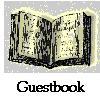







 |
 |
 |
 |
 |
 |
 |
 |
|
|
||||||||||||||||||
|
Elysombra: |
||||||||||||||||||
|
The PCs in Elysombra have this habit of blowing their way through enemy combatants. They survived the invisible, flying, fireballing wizard. They've made a tricky black dragon run away like a beaten cur -- twice. Recently, they diced up an ogre mage and an ice devil without taking a scratch. So I set them up with a noncombat challenge. Their NPC "lord," Vanashon the Uniter, sent them on a mission to destroy the Stone of the Throne, a holy boulder that the throne of the king of Elysombra's sunlands (surface world) used to sit on. The stone was now in the hands of the accursed black-skinned, subterranean elves, who had perverted it and were using it as a magical dynamo to empower themselves. The trick was that the stone did not need to be destroyed; it could be redeemed. But the PCs would have to think of that themselves. In order to achieve the greatest victory, they'd have to think outside the box. They did. In fact, it was the guy in the group who gets continually razzed about making tactical errors in combat who suggested restoring the stone instead of destroying it. The means they had for redeeming the stone was to take the direct descendent of the last king of the Elysombran sunlands into the heart of the drow kingdom where he would attempt to attune and purify the stone. He had the crown with him to help the process. Perhaps predictably, the PCs tore through the opposition and got the would-be king to the stone. The heir placed his hands on the boulder and tried to attune it spiritually. By this point, the players had done everything right. They had defeated their opponents, dreamed up a scheme to save the stone, and shepherded a low-level, half-elven heir to the crown through a suburb of Hell itself. By all rights, the heir should have been able to attune the stone. But this is Elysombra, not some nice campaign where players can rely on "fairness" and "poetic justice" to make things safe and comfortable. I secretly rolled a d20 to see how well the king attuned the stone. I figured there was at least some small chance that it wouldn't go right. I rolled a 1. Whether it was the damage that the drow had wrought, or the elven blood in the heir's veins, something went wrong. Energy shot through the heir, turning him into charcoal. Then I showed the players the 1. It was important to me that they see the roll. I didn't want them to think this was all a set up. I wanted to remind them that things can go wrong for no real reason. The characters wondered what to do. The only way to get the stone out required attuning it first, and the heir was dead. So the paladin in the party put on the crown and tried to attune the stone. Everyone knew that I was going to make him roll a die, too. Everyone knew what would happen if he rolled a 1. (They were in Hell at this point, and if you die in Hell, you stay there until the end of the world.) But he tried it, and he didn't roll a 1. Rider Ravain became king, and the stone was saved. I had not planned for these events. I hadn't even foreseen them as possible. It wouldn't have happened if I hadn't rolled a 1. If I hadn't shown the players the 1, this whole affair might have seemed like a convenient set-up. They might have felt some degree of security, following along the plot I'd laid out for them. By showing them the 1, I got across the message that something unexpected had happened, and that it was up to them to deal with it. —JoT |
||||||||||||||||||